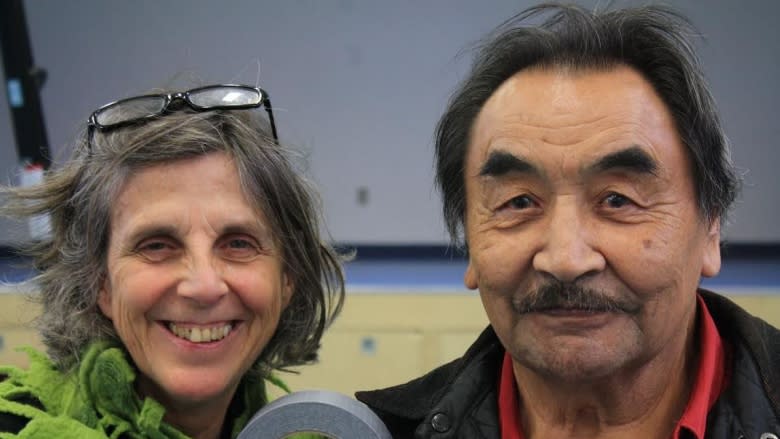New film Koneline a cinematic poem for Tahltan traditional territory
Nettie Wild brought her film – Koneline – on a mini-tour of its homeland last week before it was shown anywhere else in the world.
That homeland is a small, remote corner of northwestern British Columbia on which the Tahltan First Nation have lived for thousands of years. Wild describes Koneline, which means "our land beautiful" in the Tahltan language, as a cinematic poem of the land and the people who live and work on it.
She says Andrew Conners, the executive director of the Yukon Film Society, asked her if Koneline could have its world premiere at the Available Light Film Festival in Whitehorse. Wild said yes, with three exceptions: there would first be screenings in Telegraph Creek, Dease Lake and Iskut.
The film is set around these tiny communities. The land Tahltans call home is what mining companies call "the golden triangle," and what hunting outfitters call "Canada's Serengeti."
Wild is in love with this land. Telegraph Creek is "the most beautiful place in the world," she says
She has seen it change as swaths of land are cleared to make way for transmission lines and First Nations leave the bush to work in mining crews. Being from Vancouver, B.C., she said all she could do to address the change is gather the best crew of documentary filmmakers from across the country to make a film to show other southerners what is going on in a place that few people see.
First look
Tahltan people are tired of curious strangers coming into their territory to "stick cameras up their nose," Wild says.
"Not just here but with all my films, it's really incumbent on me to bring the film to the people who are in the film first."
In promising to give locals the first look at the finished product, she gradually gained access into people's lives. The film was shot over four years. Editing took one year.
Showing the film to the people meant packing up $50,000 worth of equipment -- speakers, a projector, and a screen -- and hauling it south from Whitehorse in a rental truck. "I don't want my film shown on a screen the size of a postage stamp," Wild says.
The 115-kilometre road from Dease Lake into Telegraph Creek is a two-and-a-half hour drive down the Stikine Canyon, the deepest in Canada.
Wild hired Elliot Brown, who is in the most crowd-pleasing scene in the film, to help her set up in the community hall. She had Brown block the windows with cardboard and garbage bags. Set-up takes six hours. After it is done, Brown takes Wild down to Six Mile, where the Tahltan have fished salmon from the Stikine River for thousands of years. Wild wanted to walk on the frozen river.
Brown says he didn't know what he was getting into when he agreed to have a camera follow him around. "Nettie Wild is amazing at what she does."
He says Wild's curiosity isn't unusual. "It's always been like that," he says.
'I may as well live on a different planet'
Brown says when he goes to the city people want to know about fishing and hunting -- "I may as well live on a different planet."
He thinks the film will put a face to the story of his land.
Mining, he says, is "a touchy subject." Brown's worked in the mine. Lots of Tahltan people do. He says mining puts food on tables, but it also tears up mountains.
Wild doesn't know how many people will make it out to the film's world premiere. Telegraph Creek has a population of approximately 250 people.
Wild says she'll be happy if 10 people show up, but she puts out 40 chairs. As people start trickling into the hall 15 minutes before show time, she adds 20 more chairs. As those fill up, she adds more. Soon, over 90 chairs are occupied.
Their are gasps and spatters of applause as people see themselves on the screen. The room is silent when a young First Nation diamond driller says he digs up the land his elders fought to protect.
Elder David Brown's cabin at fish camp is shown in the film. He says he loved the film because it shows the beauty of the land. But then he talks about how it is changing before his eyes. This winter there is hardly any snow, he says. It's harder and harder to find moose to kill, and the wolves are over-populated and starving.
No preaching
Wild's aim wasn't to preach anything to people. She wanted to show the beauty and complication of the land.
Ultimately, she says she felt success when she heard the Telegraph Creek audience laugh. "It was the laughter of recognition," she says. "That's how I know I captured something real."
The film premieres at the Available Light Film Festival in Whitehorse Sunday, Feb. 7 at 6:45 pm at the Yukon Arts Centre.



